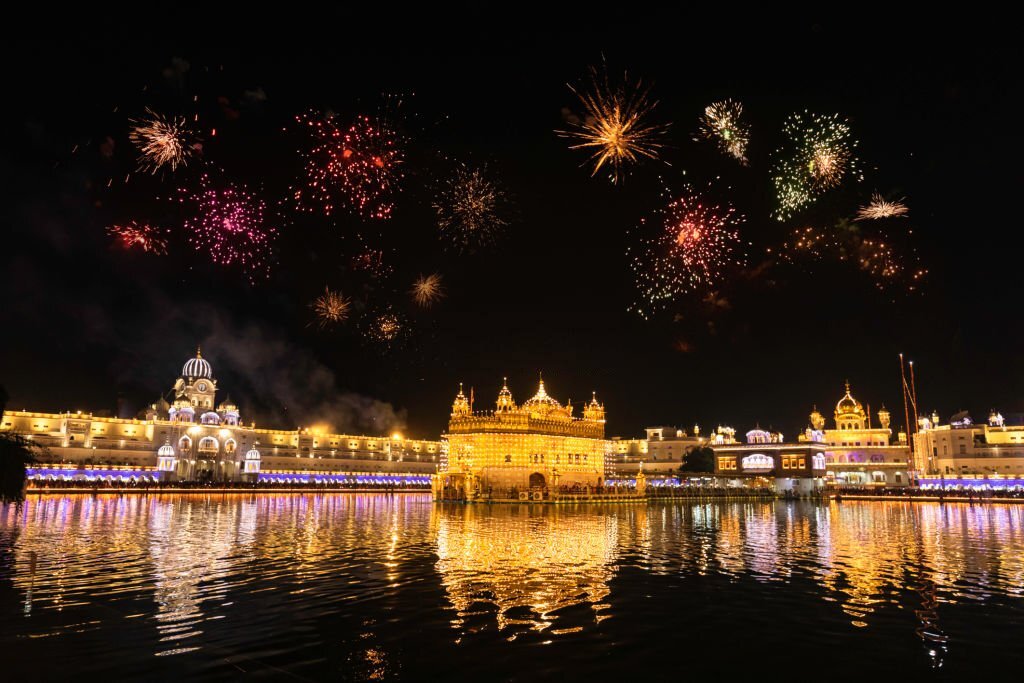The “Golden Temple: Where Devotion and Architectural Grandeur Converge”
The Golden Temple is the most important Sikh pilgrimage site in the entire globe and stands as a tribute to the rich Sikh tradition. Its architecture, which combines Hindu and Islamic design elements, represents the inclusivity upheld by the Sikh faith. A holy water tank known as the Amrit Sarovar surrounds the temple and is said to have healing abilities. Visitors are mesmerized by the temple’s mesmerizing gold-plated facade, which glitters in the sunlight and creates an incredible sight.
God of the Golden Temple
The Guru Granth Sahib, the main text of Sikhism, is honored in the temple. It is more than just a house of worship; it is also a sanctuary of spiritual solace where followers of the Sikh Gurus can commune with their heavenly teachings. Sikhs have the deepest reverence and devotion for the Guru Granth Sahib because they view it as the physical representation of the Gurus. The heavenly songs and Sikhism’s teachings are ceremoniously opened and recited from the Guru Granth Sahib every day.
Location
The Golden Temple is located in the vibrant city of Amritsar, Punjab, India, and covers an area of roughly 0.62 square kilometers. This holy place, located in the center of the city, is easily accessible to both tourists and believers and has immense spiritual value. Amritsar is well-connected by air, train, and road networks, ensuring a seamless journey to the Temple from all areas of the country. The city is renowned for its rich cultural legacy and kind hospitality. The colorful neighborhood that surrounds the temple, which is full of bustling marketplaces, authentic restaurants, and the sense of Punjab’s special beauty, welcomes visitors as they approach the temple. With its holy aura and the vibrant atmosphere of Amritsar, the Golden Temple serves as a beacon. The Golden Temple serves as a symbol of peace and togetherness, drawing visitors from all walks of life with its holy aura and the vibrant atmosphere of Amritsar.

History
The fifth Sikh Guru’s Muslim buddy, Guru Arjan Dev, placed the foundation stone for the Golden Temple in the 16th century, beginning its history. The temple has undergone numerous repairs and reconstructions over the years, each time growing larger and more impressive. Significant Sikh historical occurrences, such as the martyrdom of Guru Arjan Dev and Operation Blue Star in 1984, have taken place at the temple complex. The Golden Temple has persevered as a steadfast symbol of faith, resiliency, and spirituality despite the challenging times.
When to Visit Golden Temple
Understanding the weather, celebrations, and general atmosphere that each season brings to this revered location holds the key to finding the solution. Even though the temple is open all year round, there are several times of the year that are very spectacular. From October to March, when the weather in Amritsar, Punjab, is beautiful and perfect for touring the temple complex, is the finest time to visit the temple. The intense summer heat and the monsoon rains have passed by this time, making it easy for tourists to go about the temple grounds and take part in religious rituals.
Additionally, holidays like Diwali and Guru Nanak Jayanti draw a large number of devotees and provide a window into the rich Sikh culture and traditions, which enhance the Temple’s allure. It is a breathtaking sight that should not be missed to see the temple’s reflection in the shimmering Amrit Sarovar (Pool of Nectar) during early morning or late evening prayers. Mark these months on your calendar and schedule a trip to the temple for a magical and spiritually enlightening experience.